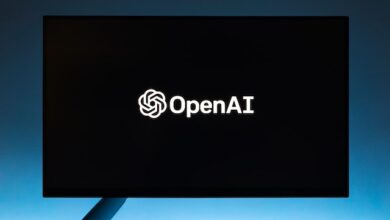ChatGPT Error Generating Response: Unveiling Digital Dilemmas

“Lost in the Labyrinth of Code: Unraveling the Frustration of ‘ChatGPT Error Generating Response’“
Imagine having a conversation with an AI that stumbles and falters, leaving you baffled. In the world of digital dialogues, encountering errors in AI-generated responses can be both perplexing and disheartening. The pursuit of seamless communication with machines often meets a roadblock when ‘ChatGPT Error Generating Response’ comes into play. Delve into the enigma that leaves users craving for coherence, and let’s navigate the maze of technological miscommunication together.
Introduction
ChatGPT, developed by OpenAI, has revolutionized human-AI interactions through its natural language processing capabilities. However, users have encountered issues such as incoherent responses, repetition, and generation of offensive content. This article addresses these concerns and provides actionable solutions to enhance the quality of interactions with ChatGPT.
Understanding ChatGPT’s Response Generation
At its core, ChatGPT employs a transformer-based architecture to predict and generate text based on the input it receives. By analyzing vast datasets, it learns patterns and linguistic structures, enabling it to produce coherent and contextually relevant responses. However, this process is not flawless, leading to various challenges.
Common Errors in ChatGPT Responses
Incoherent Responses
One of the prevalent issues users encounter is the generation of responses that lack coherence or fail to address the input query effectively. This can stem from the model’s limited understanding of nuanced contexts, resulting in disjointed or irrelevant answers.
Offensive or Inappropriate Content
ChatGPT’s ability to generate offensive or inappropriate content has raised concerns. The model might inadvertently produce content that is biased, politically incorrect, or offensive. This poses a challenge in maintaining respectful and safe interactions.
Overused Phrases and Lack of Originality
Users often notice a tendency in ChatGPT to generate responses that include overused phrases or lack originality. This can lead to responses feeling robotic and less engaging.
Exploring the Causes Behind Errors
Data Biases and Training Limitations
Errors in response generation can be attributed to biases present in the training data. If the model learns from biased or unrepresentative sources, it can perpetuate these biases in its responses. Additionally, the model’s training data might not cover all possible contexts, leading to errors in understanding complex inputs.
Ambiguity and Lack of Context
Ambiguous inputs can confuse ChatGPT, causing it to produce responses that don’t align with the user’s intent. Without sufficient context, the model might struggle to generate accurate answers.
Sensitivity to Input Phrasing
The way a user phrases their input significantly affects ChatGPT’s response. Small changes in wording can lead to varying outcomes, sometimes resulting in irrelevant or unexpected responses.
Troubleshooting ChatGPT Response Errors
Rephrasing Your Input
To mitigate response errors, users can experiment with rephrasing their queries. Changing the wording or providing more context can help the model better comprehend the intended meaning.
Utilizing System-Level Prompts
OpenAI has introduced system-level prompts that allow users to guide the model’s behavior. By setting the context explicitly, users can influence the type of response they receive.
Implementing Post-Processing
Applying post-processing to ChatGPT’s outputs can help refine responses. Users can edit, paraphrase, or rearrange generated content to ensure accuracy and coherence.
Enhancing Response Quality
Fine-Tuning with Prompt Engineering
Fine-tuning ChatGPT with carefully crafted prompts can lead to improved responses. By providing specific instructions or examples, users can guide the model’s output.
Augmenting Training Data with Diverse Inputs
Expanding the model’s training data to include a wider range of inputs can reduce biases and improve response diversity. Incorporating diverse perspectives can result in more inclusive and accurate answers.
Regular Evaluation and Feedback Loop
OpenAI encourages users to provide feedback on problematic responses. This iterative feedback loop aids in identifying and rectifying errors, contributing to continuous model improvement.
Future Developments in ChatGPT
OpenAI is committed to refining ChatGPT and addressing its limitations. Ongoing research and development aim to reduce biases, improve coherence, and enhance the model’s understanding of user intent.
Conclusion
ChatGPT’s error-prone responses can be attributed to various factors, including biases in training data, sensitivity to input phrasing, and limitations in understanding complex contexts. By implementing effective troubleshooting strategies, users can navigate these challenges and enhance the quality of interactions with ChatGPT.



